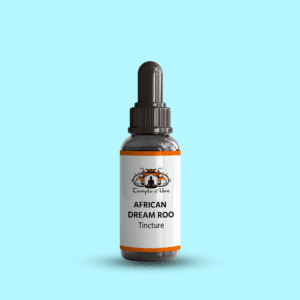Dive into the evolving field of Ayahuasca neuroscience. Uncover the latest research gaps, therapeutic potentials, and the fusion of traditional wisdom with modern science for groundbreaking mental health treatments.
Introduction to Ayahuasca
Definition and Historical Use of Ayahuasca Ayahuasca, a potent and sacred brew, has its roots deeply embedded in the rich tapestry of Indigenous Amazonian culture. For centuries, shamans and healers have revered and utilized it for its profound spiritual and healing properties. This section will explore the origins of Ayahuasca, tracing its historical use from ancient rituals to its role in contemporary society and highlighting its enduring significance across generations.
The Composition of Ayahuasca: DMT and MAOIs At the heart of Ayahuasca’s mystical journey is its unique composition, primarily consisting of DMT (N, N-Dimethyltryptamine), a potent psychedelic compound, and MAOIs (Monoamine Oxidase Inhibitors), which allow DMT to be orally active. This segment will delve into the intricate chemistry of Ayahuasca, explaining how these components synergize to produce their profound effects on the human mind and consciousness. Learn more.
Overview of Traditional and Contemporary Uses From traditional ceremonies in the Amazon to modern therapeutic practices worldwide, Ayahuasca’s applications are as diverse as they are profound. This overview will explore Ayahuasca’s uses, from its role in spiritual enlightenment and community bonding to its emerging significance in contemporary healing and personal growth.
The Neuroscience of Ayahuasca
How Ayahuasca Affects the Brain: An Overview Ayahuasca’s journey through the brain is a complex interplay of chemistry and consciousness. This section will provide a concise overview of how Ayahuasca interacts with the brain, altering perception, emotion, and cognition and setting the stage for a deeper exploration of its neurological impact.
Neurotransmitters Involved in Ayahuasca’s Effects The experience induced by Ayahuasca is primarily mediated by its interaction with various neurotransmitters, including serotonin, dopamine, and glutamate. This part will examine the role of these neurotransmitters in Ayahuasca’s effects, offering insights into how it can alter mood, perception, and thought processes.
The Impact of Ayahuasca on Brain Regions Associated with Emotion, Memory, and Vision Ayahuasca’s influence extends to critical brain regions, such as the amygdala, hippocampus, and visual cortex, which govern emotion, memory, and vision. This segment will discuss how Ayahuasca’s activation of these areas contributes to its therapeutic potential and the vivid imagery and emotional breakthroughs often reported by users.
Ayahuasca and Neuroplasticity: Potential for Brain Healing and Growth Emerging research suggests that Ayahuasca may promote neuroplasticity, the brain’s ability to form new neural connections, offering potential pathways for healing and cognitive enhancement. This section will explore the implications of Ayahuasca’s impact on neuroplasticity, considering its potential to foster recovery from neurological and psychological conditions.
Scientific Research on Ayahuasca
Overview of Key Studies and Findings on Ayahuasca’s Neurological Effects A growing body of scientific research has begun to unveil the neurological underpinnings of Ayahuasca’s effects. This overview will highlight critical studies and findings, shedding light on how Ayahuasca interacts with the brain to produce its profound impacts on consciousness and health.
Ayahuasca in the Treatment of Mental Health Disorders: Depression, PTSD, and Addiction Ayahuasca has shown promise in treating various mental health disorders, including depression, PTSD, and addiction. This section will delve into the research supporting Ayahuasca’s therapeutic potential, discussing how its unique neurochemical effects can offer new hope for those struggling with these conditions.
The Role of Ayahuasca in Cognitive Enhancement and Creativity Beyond its therapeutic applications, Ayahuasca has been associated with enhanced cognition and creativity. This final segment will explore the potential of Ayahuasca to improve cognitive functions and foster creative thinking, considering both anecdotal accounts and scientific research that support its use as a tool for cognitive and creative enhancement.

Ayahuasca Experiences and Subjective Effects
Everyday Psychological Experiences: Visions, Emotional Breakthroughs, and Insights
Ayahuasca, a traditional Amazonian brew known for its potent psychedelic effects, has garnered significant attention in neuroscience for its profound impact on the human mind. Users often report vivid visions encompassing fantastical imagery and deeply personal thematic elements. These visual experiences are frequently accompanied by significant emotional breakthroughs, where individuals confront and process past traumas, leading to insights that have a lasting impact on their emotional well-being. Neuroscience research suggests these effects may be attributed to Ayahuasca’s interaction with serotonin receptors in the brain, which plays a crucial role in mood regulation and perception.
The Concept of Spiritual or Mystical Experiences and Their Neurological Basis
Many users describe their Ayahuasca experiences as spiritual or mystical, transcending ordinary consciousness and fostering a sense of connection with the universe or a higher power. From a neuroscience perspective, this phenomenon can be linked to the compound’s ability to reduce the default mode network (DMN) activity, a brain network associated with self-referential thoughts and the ego. The alteration in DMN activity may facilitate a state of ego dissolution, paving the way for these profound spiritual experiences. This insight opens fascinating avenues for understanding the neurological underpinnings of spiritual and mystical experiences across cultures and practices.
Personal Narratives and Case Studies: Transformative Effects of Ayahuasca
Compelling personal narratives and case studies highlight the transformative potential of Ayahuasca. Individuals report significant shifts in perspective, enhanced emotional intelligence, and a deeper understanding of their life’s purpose. This anecdotal evidence, supported by preliminary research, suggests that Ayahuasca could offer therapeutic benefits, particularly in the realm of mental health. The neuroscience of Ayahuasca is beginning to unravel how these profound changes occur, with studies indicating enhanced neural plasticity and increased connectivity across different brain regions, offering a potential mechanism for the lasting impact of Ayahuasca experiences.
Safety, Legality, and Ethical Considerations
The Potential Risks and Side Effects of Ayahuasca Use
While the benefits of Ayahuasca can be profound, it is crucial to acknowledge the potential risks and side effects associated with its use. Common adverse effects include nausea, vomiting, and intense psychological distress, sometimes referred to as a “bad trip.” More severe risks involve exacerbation of psychiatric conditions and potential interactions with other medications. Neuroscience research into Ayahuasca’s safety profile is ongoing, aiming to understand better these risks and how to mitigate them.
Legal Status of Ayahuasca Around the World
The legal status of Ayahuasca varies significantly across countries, reflecting diverse cultural attitudes and regulatory frameworks. In some regions, Ayahuasca is protected under religious freedom laws, while in others, it is classified alongside controlled substances, making its use illegal. The evolving legal landscape is closely watched by both proponents and critics of Ayahuasca use, as it directly impacts research opportunities and access for therapeutic purposes.
Ethical Considerations in the Use and Study of Ayahuasca
The study and use of Ayahuasca raise critical ethical considerations. These include respecting the cultural heritage and traditional practices of Indigenous peoples, ensuring informed consent for participants in Ayahuasca research, and addressing potential exploitation in Ayahuasca tourism. The neuroscience community is tasked with navigating these ethical waters carefully, ensuring that research and application of Ayahuasca are conducted with respect and integrity.
Guidelines for Safe Consumption and Integration of Ayahuasca Experiences
Given the potent effects of Ayahuasca, guidelines for safe consumption are essential. These include medical screening for contraindications, guidance from experienced facilitators, and supportive settings that ensure participants’ physical and psychological well-being. Furthermore, integrating Ayahuasca experiences into one’s life is critical, often requiring professional support to process and fully apply the insights gained. Neuroscience research contributes to these guidelines by elucidating the mechanisms of Ayahuasca, offering insights into how best to harness its potential benefits while minimizing risks.
Future Directions in Ayahuasca Neuroscience
Gaps in Current Research and Potential Areas for Future Study
Despite the growing interest in Ayahuasca neuroscience, there still needs to be significant gaps in our understanding of its effects and mechanisms. Future research could explore:
- Long-term Impact on Brain Structure: How does regular Ayahuasca use affect the brain’s anatomy over time? Are these changes beneficial or detrimental?
- Neurochemical Pathways: While it’s known that Ayahuasca influences serotonin levels, the full range of neurochemical interactions remains to be detailed. Identifying these pathways can unlock new therapeutic targets.
- Cognitive and Emotional Effects: More nuanced studies are needed to dissect Ayahuasca’s impact on various mental functions and emotional regulation, using diverse methodologies to ensure robust findings.
The Future of Ayahuasca as a Therapeutic Tool in Neuroscience and Psychology
Ayahuasca’s potential as a therapeutic tool is vast, with preliminary studies suggesting benefits for mental health conditions such as depression and PTSD. The future could see:
- Clinical Trials: Rigorously designed clinical trials to assess efficacy and safety, paving the way for potential integration into mainstream mental health treatment paradigms.
- Personalized Medicine: Research into individual differences in response to Ayahuasca could lead to customized treatment plans, optimizing therapeutic outcomes.
- Holistic Treatment Models: Incorporating Ayahuasca within broader therapeutic frameworks, including psychotherapy and lifestyle changes, to support mental health.
The Integration of Traditional Knowledge with Modern Neuroscience
Bridging the gap between traditional Ayahuasca use and modern neuroscience offers exciting possibilities:
- Collaborative Research: Projects that involve indigenous communities and shamans, respecting and integrating their knowledge and experience with scientific methodologies.
- Understanding Mechanisms: Studying traditional use can provide clues to the neuroscientific basis of Ayahuasca’s effects, offering a richer understanding of consciousness and the brain.
- Ethical Frameworks: Developing ethical guidelines for Ayahuasca research and use that respect its cultural origins, ensuring benefits are shared with indigenous communities.

Final words
Summary of Ayahuasca’s Impact on Neuroscience and Its Potential Benefits
Ayahuasca neuroscience is at a fascinating juncture, with research beginning to unveil its complex impacts on the brain. Its potential therapeutic benefits, particularly for intractable mental health conditions, are promising, albeit in need of further exploration.
The Importance of Continued Research and Responsible Use
The need for continued, rigorous research cannot be overstated. This includes not only understanding Ayahuasca’s therapeutic potential but also its risks. Responsible use, informed by both scientific findings and traditional practices, is crucial.
Final Thoughts on the Role of Ayahuasca in Modern Medicine and Spirituality
Ayahuasca stands at the crossroads of neuroscience, medicine, and spirituality, offering a unique lens through which we can explore human consciousness and mental health. Its role in modern medicine and spirituality will likely grow, reflecting a broader shift towards integrating traditional wisdom with scientific inquiry for holistic well-being.
- What is Ayahuasca?
- Where to get Ayahuasca in the USA
- Top Ayahuasca retreats in the USA. Learn more.
- Cost of Ayahuasca Retreat: Balancing Cost and Experience. Learn more.
- What is trauma bonding?
- A Journey into the Healing Properties of Psychedelic Mushrooms. Learn more.
- Ayahuasca Retreat Georgia – Experience Spiritual Awakening
- Spiritual Retreats Georgia
- Shaman in America Exploration
- Shamanism – Shamanic healing










